Understanding Cash Flow
The Difference Between Cash and Profit
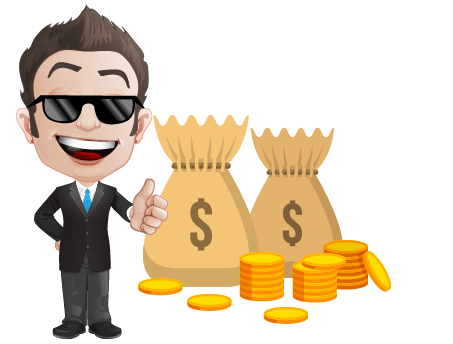
We’ve all heard the saying… Cash is king…
But let me ask you if you know what it means…
What is cash flow?
Well, to put it simply, it means the money that’s in your bank that you can spend… TODAY!
And it’s the SINGLE most important aspect in any business. In fact, not having cash flow can break your business.
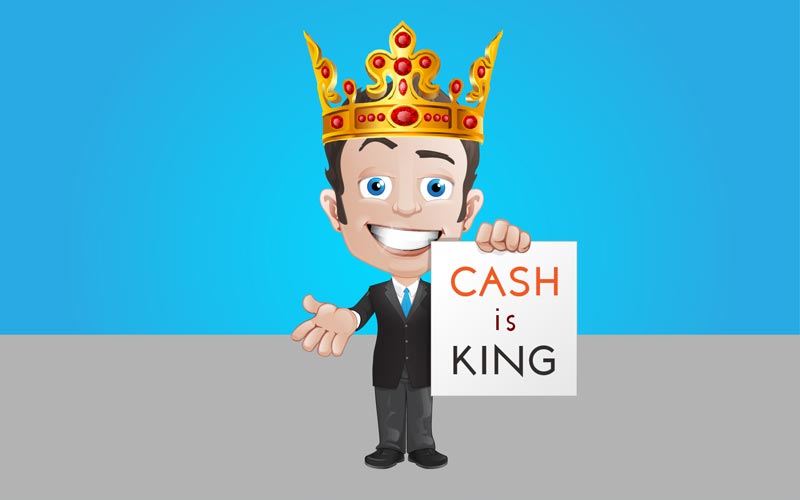
This article is part of the Business Planning Hub, where you’ll find lots of guides and resources to help you create the perfect business plan!
What is frequently misunderstood though is that there is a huge difference between profits and cash.
We are all guilty of taking cash in business for granted, because we spend cash but think in terms of profit. This is why it’s vital to understand that the two are different.
Ok… So, what are profits?
A financial gain, especially the difference between the amount earned and the amount spent in buying, operating, or producing something.
And… What is revenue?
The income generated from the sale of goods or services, or any other use of capital or assets, associated with the main operations of an organization before any costs or expenses are deducted.
So, what is cash?
Quite simply, the actual money that you have in hand!
I mentioned earlier that business owners tend to think in terms of profits rather than cash.
Take a new business, for example…
As a business owner, you would think about how much it costs to make a particular product and then how much you would sell the product for. Then you can determine what the profits would be.
Sales – costs & expenses = Profits
BUT… you don’t spend the businesses profits… you spend the CASH.
A lot of companies that are profitable, find themselves in financial crisis because their money is tied up in assets, and it’s not possible to quickly turn these assets into cash. (money owed from customers who have yet to pay.)
Every single dollar of money which is owed by customers isn’t readily available to pay the bills (yet, it’s included in your sales and profits.)
So, despite the fact that on your financial statements, it shows your assets, there simply might not be enough in the bank to pay expenses. This is why it’s vital to understand just how critical working capital is to the health of your business.
This is why it’s vital to have a business plan. We’re all guilty of not seeing clearly the cash flow implications.
We need to be able to manage our cash just as much as our profits!
A few Definitions you need to understand…
#1 Sales on credit: when you’re waiting to be paid
This method of sales is the most common…
You have a business who delivers the goods/services to a customer/client and produces an invoice. This will have a payment term, say 30 days. The payment, therefore, comes a month after the invoice and goods have been delivered.
What this means is, that although the invoice amount is included in that months’ sales (it’s booked as sales,) it’s not REAL cash in the bank.
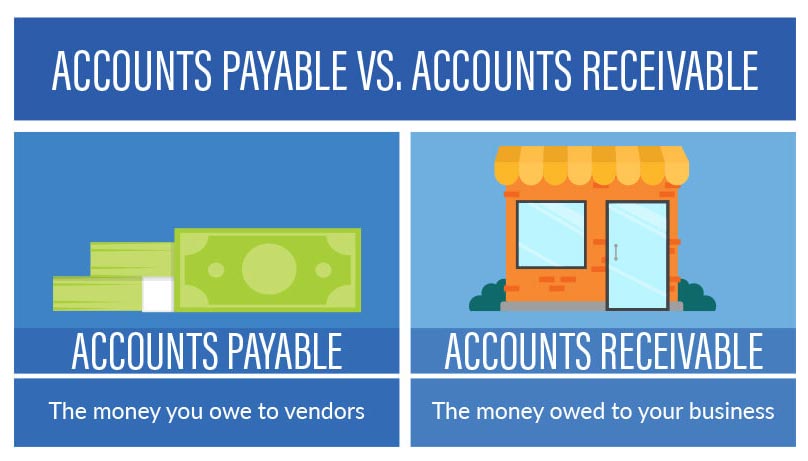
What actually happens is that it sits in the ‘accounts receivable’ column in your bookkeeping category until the payment is deposited into your business bank account.
This is where businesses can get into trouble, because it’s not in your account, and therefore you can’t spend it.
Profitable businesses do get into financial trouble because they have too much money listed in their ‘accounts receivable.’ They have real issues getting their customers to pay their invoices, which leaves not enough money in the bank.
#2 Inventory: Buying goods before you sell them
If you’re a product business, such as a shop, it’s inevitable that you need to purchase goods in order to sell them. Manufacturing businesses also face this issue as they need to buy certain materials or components before they can make their product and then sell it.
This can create potential cash flow issues…
It’s what’s called Inventory: materials for manufacturing, products for resale and components for assembly.

Money that is spent on inventory will not show up in your profits until you have sold the product. You need to be aware that the money has gone out of your bank account when you’ve spent it.
If your business depends on Inventory, being able to manage this is CRITICAL for your cash flow.
A lot of money can be tied up, i.e., sitting on the shelf for months at a time and not getting sold. And what’s more, that money has been deducted from your bank account, not showing up in your profit and loss statement.
#3 Bills: Money sitting in your bank vs. money that you owe
We’ve explained what ‘accounts receivable’ is…. Well, the opposite to this is what’s called… ‘Accounts Payable.’
This means the money, you as a business, owes its vendors.
By paying your invoices to your vendors on a 30 plus day term, is great for your cash flow because every dollar that you have which sits in your ‘Accounts Payable,’ counts as expenses. It might decrease your profits, but it’s still money in your bank.
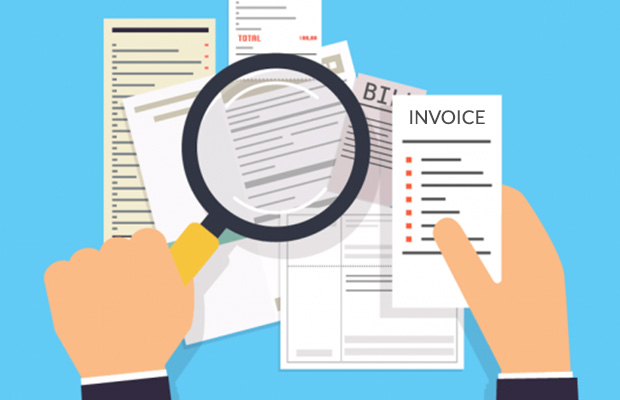
You own this until it’s paid to your vendor. You must subtract your expenses from your profits when they are incurred, not once you pay.
So, ‘payables’ means the opposite of ‘receivables’:
Receivables = your customers have your money.
Payables = you have your vendors’ money.
#4 The difference between cash and profits: A case study
To help illustrate the difference between cash and profits, here’s an example:
Bobby’s Car Warehouse, a car super-store in a medium-sized local market, and has sales of about $800,000 per year.
This chart below is showing the key operating numbers for the warehouse spread over 6 months. What you see here are your sales, your direct costs, your operating expenses and income, and your profits.

Let’s now compare this to a cash flow projection where we make the assumption that the warehouse makes 90% of its total sales on account (which will be paid later).
We also assume that the customers pay their invoices after two months (this is quite common for most business to business companies.)
Also, let us assume that Bobby’s keeps a month’s worth of sales as products in the warehouse, which we call inventory, and that his customers can buy.
Bobby has to purchase these products for him to sell them. The result is that the cash flow differs vastly from profits, as shown in the illustration below:

It’s clear to see that the difference between profits and cash is more than $90,000.
And because the business sells approximately $30,000 products a month, it’s likely to go bankrupt because of the lack of cash.
This is how the difference looks in a graph:
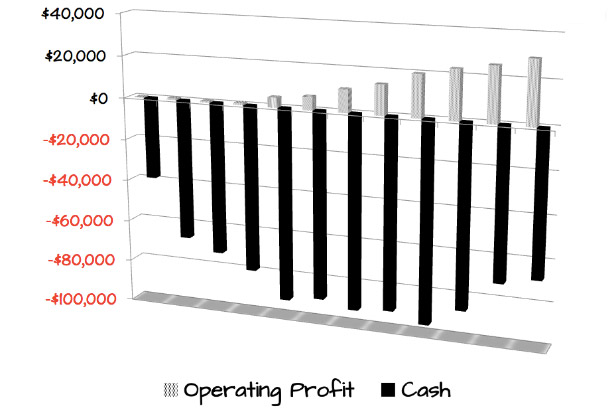
Bottom Line: Mind your cash flow!!!
We’ve all heard the phrase… ‘your bottom line’! This refers to the bottom line from your profits and loss statement.
That is why, for business owners, cash flow is their real bottom line and not profits.
To be a profitable business, you have to be aware of your cash flow, not just your profits.
Additional Resources:
To help you even further in creating your business plan, why not check out the following articles to help you in writing the perfect plan to impress:
- The 5 (MUST HAVE) Elements of a Successful Financial Plan
- How to do a Sales Forecast: All you need to know
- Profit and Loss Statement: A Step-by-Step Guide. How to ensure your business stays profitable
- Understanding Cash Flow - The Difference Between Cash and Profit
- What is a Balance Sheet and why is it important in your Business Plan?
- Balance Sheet Template [FREE DOWNLOAD]
- Profit & Loss Template [FREE DOWNLOAD]
- Cash Flow Template [FREE DOWNLOAD]
Now, over to you...
Now I’d love to hear from you:
Are you still unsure of which business plan you need or have you written a business plan and you would like us to review it?
Leave your comments now and I will be sure to answer as soon as they come in!





